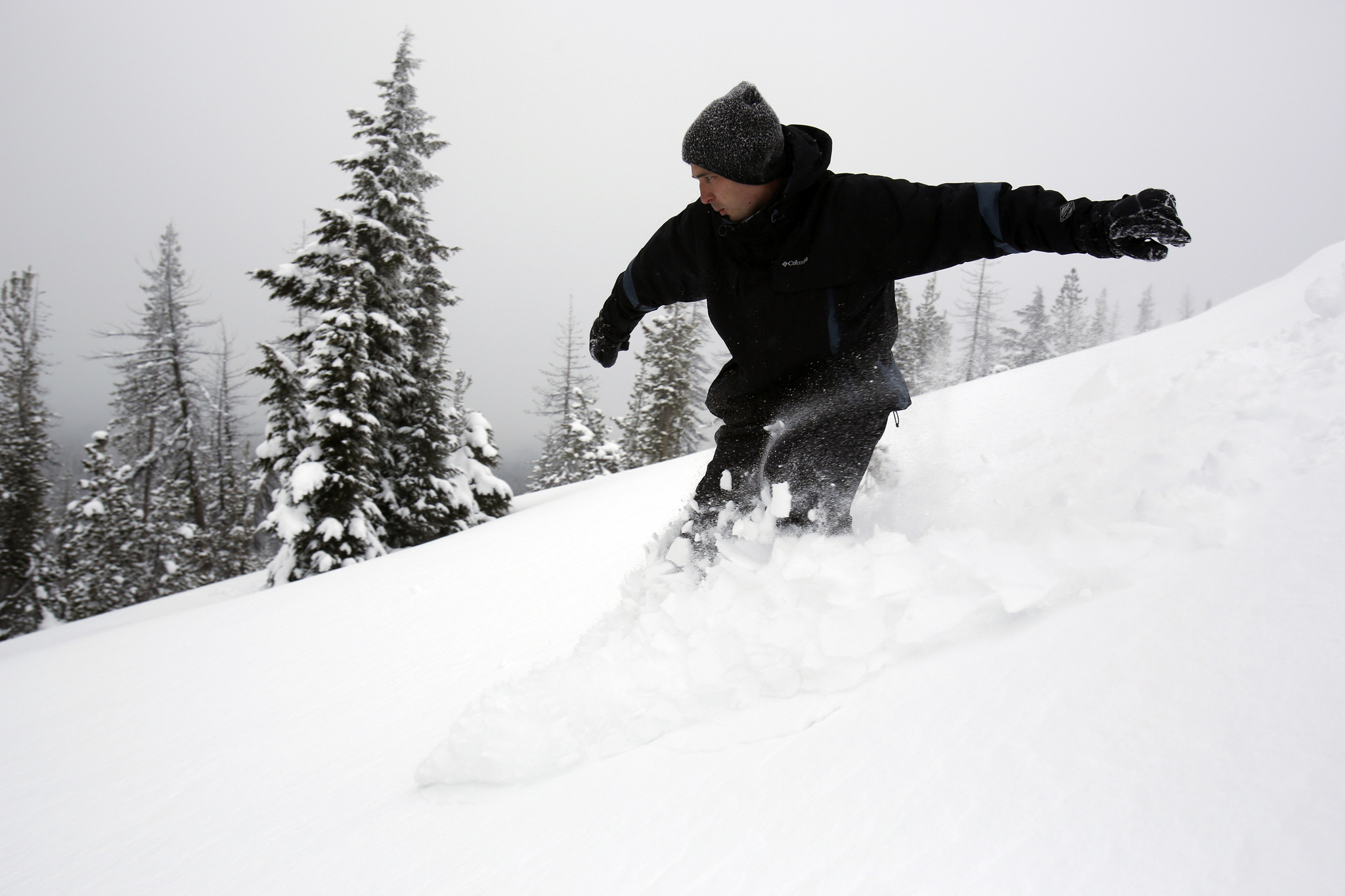By MARK MORICAL
The (Bend) Bulletin
VISTA BUTTE SNO-PARK, Ore. — Some backcountry areas in Central Oregon are so accessible that it is hard to even consider them backcountry.
Vista Butte is certainly one of those places.
But backcountry is backcountry, and snow enthusiasts should always take the necessary safety precautions whenever they venture away from resorts and into the mountains, no matter how close to town or the highway they might be.
Just a few miles from Mount Bachelor, Vista Butte Sno-park is basically just some extra space for parking along the shoulder of Century Drive.
I arrived there last week to find the “Sno-park Parking Permits Required” sign protruding just a couple of feet above the enormous snowpack of this winter.
My plan was to snowshoe to the top of 6,619-foot Vista Butte and snowboard back down toward the sno-park.
From the sno-park, reaching the summit of the butte to the northeast is a 2.5-mile trek with a 700-foot elevation gain.
Tumalo Mountain, located just across Century Drive from Mount Bachelor, is the best-known Central Oregon destination for backcountry snowriders. But Vista Butte is a decent option when Bachelor and Tumalo Mountain are getting pounded with wind and snow.
The snowshoe up Vista Butte started out pretty challenging on a cold, gray day with little wind, as I slogged for about half a mile through deep, untracked snow before turning onto the well-packed Butte Trail.
After climbing steadily for nearly 2 miles, I linked up to the Vista Butte Trail for the final half mile. Mount Bachelor, Tumalo Mountain and the surrounding hills came into view above the tree line.
The trail grew steeper and steeper before I finally reached the summit. From the top, I looked out on the vast, snow-covered high desert, buttes popping up here and there and the rocky cliffs of the Tumalo Falls area visible just to the northeast.
Several wind-carved cornices lined the summit of Vista Butte. I glanced down at possible lines through which to snowboard.
I had heard from a few Central Oregon backcountry experts that the southern portion of the butte offers the best options for skiing and snowboarding — and riding that direction can place you back near Vista Butte Sno-park.
Most of the snowriding on Vista Butte is among the trees, so skiers and snowboarders should watch out for tree wells, areas around the bases of trees where unconsolidated snow collects and creates potential hazards for an unsuspecting snowrider.
Backcountry skiers and snowboarders should also be prepared for avalanche risk, especially after all the recent snowfall.
At Vista Butte, the numerous trees anchor the snow to make for reduced chance of avalanche, but snowriders should come equipped with all the necessary avalanche tools, including a shovel, a probe and a transceiver.
After replacing my snowshoes with my snowboard, I sank deep into the fresh snow and began to carve my way down the butte, finding open chutes of powder near the top but soon finding myself back among the trees.
Jon Tapper, vice president of the Central Oregon Avalanche Association, says backcountry enthusiasts cannot assume that they are free of avalanche danger at smaller, lower-angled areas such as Vista Butte and Tumalo Mountain.
“That’s a side of avalanche education that veers more toward behavior science,” Tapper says. “Anything can slide.”
He added that during a big part of the storm cycle in early January, several small avalanches were reported in the Todd Lake area, another popular place for backcountry skiers and snowboarders.
“It wasn’t catastrophic, but there were signs of instability in the snow,” Tapper says. “That’s because there was so much new snow. You had storm upon storm, creating layer upon layer.”
The Central Oregon Avalanche Association (www.coavalanche.org,) which runs on donations, relies on four backcountry experts who observe and report snow conditions on a regular basis. They offer a wide variety of locations for their reports. For Southcentral Alaska, find avalanche information at the Chugach National Forest Avalanche Information Center, www.cnfaic.org.
While a deep snowpack this winter can lead to dangers, Tapper explains, avalanche risk depends strictly on the composition of the snowpack and where the weak layers are located.
“It absolutely depends on how each of those storms came in, and whether there are weak layers buried in there, and then the evolution of the snowpack,” he says. “As you get more used to understanding the general patterns that go along with snow in the backcountry, and how the snowpack changes, you would recognize that we’re out of a period of instability, and moving toward more stability. Things aren’t changing as rapidly, overall.
“But things change every day.”
Backcountry gear
A rundown of some handy equipment for snowriding in the backcountry:
— Transceivers, probes and shovels: Transceivers work in case of an avalanche only if both the person who is buried under the snow and those trying to find the victim have them. The device’s signal becomes stronger as rescuers get closer to the victim. Probes are long sticks, broken down like tent poles, that are used to search the snow for an avalanche victim. A compact shovel can be used to dig the victim out.
— Climbing skins: Nylon material that sticks to the bottom of skis to provide traction on the way up the slope.
— Alpine touring skis: Skiers have their heels free while skinning up the hills, and then lock their heels in for coming down the mountain.
— Telemark skis: Skiers’ heels are always free, whether touring or skiing down the slopes.
— Splitboard: This snowboard splits in two, allowing the boarder to apply skins for touring and then adjust the two sides into one board for riding.

